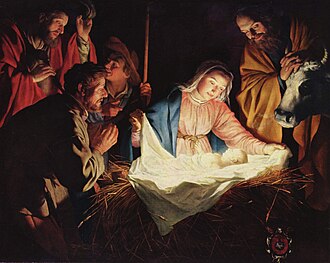भक्तपुर, पुस १५ - विश्वसम्पदा सूचीमा सूचीकृत भक्तपुर दरबार क्षेत्रको ऐतिहासिक प्राचीन वसन्तपुर दरबारको भग्नावशेष भेटिएको छ । मल्लकालीन राजा जगतप्रकाश मल्लका पालामा निर्मित दरबार १९९० सालको भूकम्पले पूर्णरूपमा भग्नावशेषमा परिणत गरेको थियो ।
सम्बन्धित निकायले सक्रियता देखाउने हो भने उक्त भग्नावशेषलाई दरबारको स्वरूप दिन सकिने विज्ञहरूले बताएका छन् । 'दरबार भएको जग्गामा अहिले पनि कुनै भौतिक संरचना निर्माण भएको छैन, दरबारको जग अहिले पनि सुरक्षित छ, पुराना इँटा, ढुङ्गा अहिले पनि यथावत् छन्,' संस्कृतिकर्मी ओम धौभडेलले भने, 'दरबारको वास्तविकता झल्काउने फोटो सुरक्षित छन्, वसन्तपुर दरबारसँगै भण्डारखाल दरबार, बद्री, केदारनाथ र गोपीकृष्णको मन्दिर अहिले पनि सुरक्षित छन् ।' यिनै प्रमाणका आधारमा पुरातत्व विभागले चाहने हो भने दरबार बन्न सक्ने उनले बताए ।
दरबार परिसरमा बगैंचा, नाट्यशाला, पोखरी यथावत् छन् । दरबार निर्माण गर्ने हो भने ती बगैंचा र पोखरीको महत्त्व झन् बढ्ने धौभडेलले बताए । ऐतिहासिक सम्पदा तथा मठमन्दिर संरक्षण गर्ने निकाय पुरातत्व विभागको ध्यान यसतर्फ केन्दि्रत हुनुपर्ने उनले औंल्याए । 'तत्कालीन राजा पृथ्वीनारायण शाहले भक्तपुर जितेपछि भक्तपुरमै रहेको वसन्तपुर दरबारको झझल्को दिने गरी काठमाडौंस्थित वसन्तपुरमा रहेको वसन्तपुर दरबार निर्माण गर्न लगाएका हुन्,' उनले भने । उक्त क्षेत्रमा दरबारसँगै बनाइएका दुई सिंह र उग्रचण्डी भैरव र भगवतीको मूर्ति अहिले जस्ताको तस्तै रहेको जानकारी धौभडेलले दिए । भक्तपुर नगरपालिका र पुरातत्व विभागले पहल गरे दरबारलाई पुनः ब्युँताउन सकिने उनको भनाइ छ । यो दरबार पुनर्निर्माण गर्नसके विश्वमै पुरात्वको क्षेत्रमा नमुना हुने उनले बताए ।
इतिहासविद् प्राध्यापक डा. पुरुषोत्तमलोचन श्रेष्ठले सरोकारवाला सबै निकायले अहिले पनि प्रयास गर्ने हो भने नेपालको गौरव र प्रतिष्ठाको धरोहर भक्तपुरको वसन्तपुर दरबार निर्माण गर्न सकिनेमा कुनै शंका नभएको बताए । दरबार भएको ऐतिहासिक सबै प्रमाण भइसकेपछि ऐतिहासिक झझल्को दिने गरी पुरातत्व विभागले पुनःदरबार निर्माणको प्रक्रिया अगाडि थाल्नुपर्ने आवश्यकता औंल्याउँदै श्रेष्ठले, भने, 'दरबार निर्माणका लागि पुरातत्व विभाग एक कदम अगाडि बढे हामी दुई कदम अगाडि बढ्न तयार छौं ।' दरबारको जग खन्दा अहिले पनि थुप्रै प्रमाण फेला पर्छन् । दरबार पुनर्निर्माण गर्नु केवल केही व्यक्तिका लागि मात्र नभई विश्वका लागि नै नमुना बन्ने हुँदा आजै पुरातत्व विभागको ध्यान यसतर्फ जानुको विकल्प नभएको श्रेष्ठले बताए । वसन्तपुर दरबारका बारेमा लिखित अभिलेख राख्ने काम सबैभन्दा पहिले आफूले नै गरेको दाबी उनले गरे ।
बद्री-केदारनाथ, राष्ट्रिय कला संग्रहालय, पचपन्न झ्याले दरबार लगायतका सम्पदाहरू अहिले पुनर्निर्माण गरेर भक्तपुरमा सांस्कृतिक पुनर्जागरणको लहर आएको श्रेष्ठले बताए । 'यही सांस्कृतिक पुनर्जागरणको लहरमा वसन्तपुर दरबार पनि पुनर्निर्माण हुन सक्छ,' उनले भने । पुरातत्व विभाग विश्वसम्पदा शाखाका प्रमुख सौभाग्य प्रधानाङ्ग विश्वसम्पदा सूचीमा सूचीकृत कुनै पनि सम्पदा पुनर्निर्माण गर्ने प्रशस्त आधार भए पहल गर्ने बताए ।
तत्काल दरबार अवलोकन गरी आवश्यक प्रक्रिया पूरा गरी दरबारलाई पुनर्निर्माणका लागि पहल र प्रयास गर्ने उनले उल्लेख गरे । 'पुराना सम्पदा र धरोहरहरूको संरक्षण र संवर्द्धन गर्ने आफूहरूको जिम्मेवारी नै भएकाले यसतर्फ विभागको ध्यानाकर्षण हुन्छ,' उनले भने ।
सम्बन्धित निकायले सक्रियता देखाउने हो भने उक्त भग्नावशेषलाई दरबारको स्वरूप दिन सकिने विज्ञहरूले बताएका छन् । 'दरबार भएको जग्गामा अहिले पनि कुनै भौतिक संरचना निर्माण भएको छैन, दरबारको जग अहिले पनि सुरक्षित छ, पुराना इँटा, ढुङ्गा अहिले पनि यथावत् छन्,' संस्कृतिकर्मी ओम धौभडेलले भने, 'दरबारको वास्तविकता झल्काउने फोटो सुरक्षित छन्, वसन्तपुर दरबारसँगै भण्डारखाल दरबार, बद्री, केदारनाथ र गोपीकृष्णको मन्दिर अहिले पनि सुरक्षित छन् ।' यिनै प्रमाणका आधारमा पुरातत्व विभागले चाहने हो भने दरबार बन्न सक्ने उनले बताए ।
दरबार परिसरमा बगैंचा, नाट्यशाला, पोखरी यथावत् छन् । दरबार निर्माण गर्ने हो भने ती बगैंचा र पोखरीको महत्त्व झन् बढ्ने धौभडेलले बताए । ऐतिहासिक सम्पदा तथा मठमन्दिर संरक्षण गर्ने निकाय पुरातत्व विभागको ध्यान यसतर्फ केन्दि्रत हुनुपर्ने उनले औंल्याए । 'तत्कालीन राजा पृथ्वीनारायण शाहले भक्तपुर जितेपछि भक्तपुरमै रहेको वसन्तपुर दरबारको झझल्को दिने गरी काठमाडौंस्थित वसन्तपुरमा रहेको वसन्तपुर दरबार निर्माण गर्न लगाएका हुन्,' उनले भने । उक्त क्षेत्रमा दरबारसँगै बनाइएका दुई सिंह र उग्रचण्डी भैरव र भगवतीको मूर्ति अहिले जस्ताको तस्तै रहेको जानकारी धौभडेलले दिए । भक्तपुर नगरपालिका र पुरातत्व विभागले पहल गरे दरबारलाई पुनः ब्युँताउन सकिने उनको भनाइ छ । यो दरबार पुनर्निर्माण गर्नसके विश्वमै पुरात्वको क्षेत्रमा नमुना हुने उनले बताए ।
इतिहासविद् प्राध्यापक डा. पुरुषोत्तमलोचन श्रेष्ठले सरोकारवाला सबै निकायले अहिले पनि प्रयास गर्ने हो भने नेपालको गौरव र प्रतिष्ठाको धरोहर भक्तपुरको वसन्तपुर दरबार निर्माण गर्न सकिनेमा कुनै शंका नभएको बताए । दरबार भएको ऐतिहासिक सबै प्रमाण भइसकेपछि ऐतिहासिक झझल्को दिने गरी पुरातत्व विभागले पुनःदरबार निर्माणको प्रक्रिया अगाडि थाल्नुपर्ने आवश्यकता औंल्याउँदै श्रेष्ठले, भने, 'दरबार निर्माणका लागि पुरातत्व विभाग एक कदम अगाडि बढे हामी दुई कदम अगाडि बढ्न तयार छौं ।' दरबारको जग खन्दा अहिले पनि थुप्रै प्रमाण फेला पर्छन् । दरबार पुनर्निर्माण गर्नु केवल केही व्यक्तिका लागि मात्र नभई विश्वका लागि नै नमुना बन्ने हुँदा आजै पुरातत्व विभागको ध्यान यसतर्फ जानुको विकल्प नभएको श्रेष्ठले बताए । वसन्तपुर दरबारका बारेमा लिखित अभिलेख राख्ने काम सबैभन्दा पहिले आफूले नै गरेको दाबी उनले गरे ।
बद्री-केदारनाथ, राष्ट्रिय कला संग्रहालय, पचपन्न झ्याले दरबार लगायतका सम्पदाहरू अहिले पुनर्निर्माण गरेर भक्तपुरमा सांस्कृतिक पुनर्जागरणको लहर आएको श्रेष्ठले बताए । 'यही सांस्कृतिक पुनर्जागरणको लहरमा वसन्तपुर दरबार पनि पुनर्निर्माण हुन सक्छ,' उनले भने । पुरातत्व विभाग विश्वसम्पदा शाखाका प्रमुख सौभाग्य प्रधानाङ्ग विश्वसम्पदा सूचीमा सूचीकृत कुनै पनि सम्पदा पुनर्निर्माण गर्ने प्रशस्त आधार भए पहल गर्ने बताए ।
तत्काल दरबार अवलोकन गरी आवश्यक प्रक्रिया पूरा गरी दरबारलाई पुनर्निर्माणका लागि पहल र प्रयास गर्ने उनले उल्लेख गरे । 'पुराना सम्पदा र धरोहरहरूको संरक्षण र संवर्द्धन गर्ने आफूहरूको जिम्मेवारी नै भएकाले यसतर्फ विभागको ध्यानाकर्षण हुन्छ,' उनले भने ।











